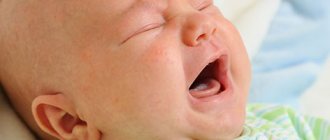Many mental disorders begin to develop in early childhood, but cannot be diagnosed until the child is 5 years old. The diagnosis of ADHD is most often made in early preschool age, although symptoms of the disorder may appear earlier. This is due to the fact that diagnosing attention deficit hyperactivity disorder requires an assessment of the child’s learning ability, his social functions, as well as an analysis of behavior in different settings (at home and at school). Attention deficit disorder is one of the most controversial diagnoses. There is an opinion among many ordinary people that this is just another “fashionable” disorder that justifies laziness and bad upbringing. But this is far from true. Even at the beginning of the twentieth century, scientific works appeared that described several children with increased impulsiveness, hyperreactivity and inattention. Today, ADHD symptoms appear in approximately 6% of the population, but only 2% of people seek qualified medical help. This psychological disorder is more often diagnosed in boys. It is less common among girls, but its treatment requires a more serious approach. In addition, the symptoms of ADHD in the fairer sex are less pronounced, and hyperactivity may be absent altogether.
Raising and educating children with the syndrome is very difficult. Many parents cannot come to terms with the idea that their child may have a mental disorder. They blame others, the school, and, somewhat less frequently, themselves for their child’s behavior. But if you take the necessary measures in time, you can significantly improve the child’s condition. To do this, first of all, you need to understand what attention deficit hyperactivity disorder is.
Why is ADHD dangerous?
Impaired attention and hyperactivity in children lead to the fact that a school-age child with normal or high intelligence has impaired reading and writing skills, cannot cope with school assignments, makes many mistakes in completed work and is not inclined to listen to the advice of adults. The child is a source of constant anxiety for those around him (parents, teachers, peers), as he interferes in other people’s conversations and activities, and overreacts to external stimuli (the reaction does not correspond to the situation). Such children have difficulty adapting to a team; their clear desire for leadership has no basis in fact. Due to their impatience and impulsiveness, they often come into conflict with peers and teachers, which aggravates existing learning disorders. A child with attention deficit is also unable to foresee the consequences of his behavior and does not recognize authorities, which can lead to antisocial acts. Antisocial behavior is especially common in adolescence, when children with attention deficit hyperactivity disorder have an increased risk of developing persistent behavioral disorders and aggressiveness.
What is ADHD and why it cannot be cured, but it can be corrected
Fidget syndrome, a fashionable disease, an exaggerated problem - as they call attention deficit hyperactivity disorder (ADHD or ADHD). But neurologists and psychiatrists warn that ADHD should not be taken lightly: it is a diagnosis that cannot be cured, but requires some correction. The number of children with this syndrome is increasing throughout the world. It is important to properly help them in childhood so that the disease does not interfere with living fully in adulthood.
Features of behavior
“Children with ADHD are special already in the first year of life: they are more mobile, more often making chaotic movements with their arms and legs. As a rule, these children are delayed in speech development, more clumsy, and inattentive. Around one and a half to two years, we can say that there are prerequisites for this syndrome,” says a neurologist at the Tushino Children’s Hospital named after Z.A. Bashlyaeva Margarita Samigulina. “But we have the right to make this diagnosis only by the age of six, when we can objectively assess inattention, hyperactivity, and restlessness using scales. We work together with a psychologist, he plays with the child on the mat for about an hour, asks questions, gives assignments. And before that, we assume a syndrome, we emphasize to parents that children are more restless and disinhibited.”
Young children with ADHD often behave like monkeys jumping from tree to tree. Children actively grab one toy, then another, quickly lose interest in it, and cannot concentrate on any activity. At the same time, they are very active. All children are different, this syndrome may appear earlier in some, later in others, but most often parents notice the problem at one and a half to two years.
7 sensory games that will calm your child and relieve stress
Children's neurologist Nina Moskovkina says: “According to the standards, by the age of one and a half, a child’s interest should mature, he should be able to study, build houses from cubes, assemble a pyramid, he should be interested in this. A hyperactive child works out a little and then quits. Such children have reduced interest, they are not interested in anything. The most important thing is not to miss the moment when a child develops a desire to understand the world. Mothers often miss this, and so children begin to enter hyperactivity disorder with lack of attention. You need to talk to the child all the time, he must hear his mother’s word. Even when you are just walking down the street, be sure to tell something, or even better, read children’s poems, this develops memory and attention well. The mother must explain that this is snow, and these are snowflakes, they are cold, a one-year-old child will understand this. Often, during this important period of a child’s life, parents spend all their free time on gadgets; they have no time to instill in their child a sustainable interest. What do we often see? A mother walks with her child, frantically typing something into the phone, and the child just doesn’t want to interfere.”
Fictional syndrome
An active child is the norm, and you shouldn’t call all active children hyperactive. “Unfortunately, we have a problem of overdiagnosis, when parents come to see a neurologist or psychologist and say that the child is hyperactive, and he is given this diagnosis - ADHD, without assessing this hyperactivity,” warns Margarita Samigulina. “In general, ADHD is a psychiatrist’s diagnosis; it is a disorder in the emotional-volitional sphere; children cannot control their emotions and behavior. There are fictitious hyperactivity syndromes when a child runs around the ceiling at home because mom is cooking and dad is lying on the sofa watching TV, the child is bored, and with his activity he is trying to attract the attention of his parents. Many parents call this behavior hyperactivity. And this is just manipulation of adults in the desire to attract their attention.”
More and more children with ADHD
The number of children with ADHD has increased all over the world and in Russia too. According to the latest data from American researchers, in the United States, 11% of schoolchildren suffer from this syndrome. The reasons are different, but Margarita Samigulina considers problematic pregnancy and childbirth to be the main ones: “We began to care for premature babies more, they have an immature nervous system, and they have various lesions of the perinatal nervous system, this also affects. Many women now have problems with pregnancy. There are genetically determined factors, they have not been proven, but it is believed that if mom and dad have this syndrome, then the child will also have it. But the biggest impact, it seems to me, is prematurity, premature birth, stimulation of the birth process.”
Very often, children with ADHD have birth injuries to the cervical spine and head. Hypoxia, asphyxia, breech presentation, rapid labor, and a long anhydrous period can be the cause of ADHD. Therefore, if all these problems exist, you should definitely visit a neurologist.
Neurologist Nina Moskovkina notes that smoking by the mother during pregnancy can also provoke this syndrome - nicotine constricts blood vessels, the child receives less oxygen. “Poor nutrition can also lead to hyperactivity. Ideally, the baby should receive breast milk. A mother who is breastfeeding should receive normal amounts of fats, proteins, carbohydrates, vitamins, and not eat fast food. If the mother does not have milk, the baby needs to be fed properly.”
Treatment
There is no cure for attention deficit hyperactivity disorder. Previously, neurologists prescribed nootropic, sedative drugs, but it was rather a therapy of despair to help parents, recalls Margarita Samigulina. “Today there is only one drug that really has an effect on this syndrome - this is Strattera. It is expensive, and is only allowed from 6-7 years old. We prescribe it when a child goes to school to help him get involved in learning, get used to lessons, learn to control himself, in middle school we remove this drug, and children, as a rule, study normally. In kindergarten, this syndrome does not bother the child, it bothers those around him, the teachers, and the child feels great. At school, the situation is different - due to his inattention, the student cannot study, cannot absorb the material due to his syndrome, so our medical help is already required there.”
Diagnosis for life
ADHD is a lifelong diagnosis and has no cure. Adults adapt to it, but they still have forgetfulness and frequent mood swings. Such adults often suffer from low self-esteem, increased self-criticism, they lack motivation, they are forgetful, uncollected, and inattentive. Margarita Samigulina says: “But this does not interfere with their lives. They also go to work and do everything they need to do. It’s just that adults learn to live with this syndrome and adapt to it. But there are statistics that a large percentage of people with attention deficit disorder become drug addicts, alcoholics, and lead an antisocial lifestyle. This is how the syndrome manifests itself. They are active, and if they were not interested in something in childhood, their frantic energy was not directed in the right direction, then later they find a way out only in antisocial actions. They are not accepted by society if their parents could not help them in childhood.”
In adults, the syndrome manifests itself in different ways - some bite their nails because they cannot cope with their hyperactivity. They need to constantly look for something to do with their hands, explains Nina Moskovkina: “Soft toys with granules help, they can be played with in your hands. As a rule, when children with ADHD grow up, they do not go into professions that require perseverance, but choose professions where their hands work and their heads are distracted. Forging, sculpting, and wood carving work well.”
Sports to help
Sports help children correct excessive activity. Strength sports are not an option; hiking, water tourism, swimming, jogging, skiing, and skating are recommended. The load should be moderate, because children can become overexcited and find it difficult to calm down on their own. “It is important to do physical education, but professional sports (Olympic reserve schools) are contraindicated. It is important that additional activities are interesting to the child. A heavy school load, studying in specialized schools and gymnasiums, as a rule, are beyond the capabilities of a child with ADHD. It is better if the child attends a regular school with an adequate workload. If possible, home (family) training is indicated; Montessori schools have proven themselves well in working with children with ADHD,” says practicing psychologist, Ph.D., Associate Professor of the Department of Human Psychology of the Russian State Pedagogical University named after. A.I. Herzen Yulia Guseva.
Help from a psychologist
In parallel with observation by a neurologist or psychiatrist, Yulia Guseva recommends that children with ADHD undergo a course of psychotherapy: “Usually psychologists use play therapy when working with children suffering from ADHD. In the game, a child learns to interact with others and himself, learns to express his emotions and feelings in a socially acceptable form, in addition, a psychologist, as part of therapy, sets boundaries if they are violated in real life. Gradually, the child transfers the acquired communication skills from the psychologist’s office to real life.”
The parent of a child with ADHD is his most important assistant and accompanying person, the psychologist notes. One of the serious problems of such a child is self-control, volitional self-regulation. He cannot concentrate on lessons, gets distracted, cannot pack his briefcase, cannot control himself, for example, fights with other children. “In this regard, the control function must be taken over by the parent. Be there when the child is doing his homework, double-check with the child that everything is collected the next day, and remind him that it’s time to go to the club. There is no need to be afraid that the child will never do anything himself because of such care. The fact is that children with ADHD usually have dysfunction of the frontal lobes of the brain, which, in fact, are responsible for self-control and self-regulation. As the child's brain matures, he will have greater control over himself. This usually occurs around adolescence, provided, of course, that appropriate treatment has been carried out.”
For a child with ADHD, it is very important to adhere to a daily routine, a calm rhythm of life and the absence of an overabundance of additional activities; the family must establish a framework for acceptable behavior. “These children do not accept criticism when you yell at them, they, firstly, do not understand why they are being yelled at, and, secondly, they become more angry and try to do something out of spite,” warns neurologist Margarita Samigulina. “And when they are addressed kindly, they hear, and this is how you can achieve results from them. It is useless to shout, beat, or punish children with this syndrome.”
What to read to parents of a child with ADHD
Russell Barkley, Christina Benton "Your Naughty Child"
Many parents of children with ADHD note that this book, which has already become a classic, has helped them a lot. The authors explain the reasons for disobedience, tell how it can be overcome, and explain what needs to be said to the child and how. They teach how to correct a child’s behavior through a system of praise, rewards and mild punishments. The book contains practical diagrams, a questionnaire for parents, and checklists.
Ekaterina Murashova “Children-“mattresses” and children-“disasters”. Hypodynamic and hyperdynamic syndrome"
The author explains in a fascinating way what ADHD is, how often this syndrome occurs, what it looks like in practice, and how doctors deal with it. Answers the most common questions that parents ask specialists, and tells what parents of preschoolers and schoolchildren with ADHD should do.
Lyudmila Yasyukova “Optimization of learning and development of children with MMD. Diagnosis and compensation of minimal brain dysfunctions"
Lyudmila Yasyukova devoted her entire life to the problem of ADHD, not only as a psychologist, but also as a mother of children with this syndrome. She describes in detail the psychological characteristics and behavioral manifestations of ADHD and explains the neurological causes. Gives practical recommendations and specific methods for teaching such children.
Yulia Guseva “Features of inclusion in the educational process of children with attention deficit hyperactivity disorder in a Montessori environment”
Children with attention deficit hyperactivity disorder have difficulty learning in kindergartens, have difficulty complying with disciplinary requirements, and have difficulty communicating with peers. Psychologist Yulia Guseva tells how you can help such children.
In order not to miss anything useful and interesting about children's entertainment, development and psychology, subscribe to our channel on Telegram. Just 1-2 posts a day.
MORE USEFUL:
Why marriage is not a business, or who should do housework
How to make comments to other people's children. 6 rules of politeness
Aggression on the court and toilet talk. Psychologist answers parents' questions
Types of ADHD in children
There are 3 types of attention deficit hyperactivity disorder depending on the symptoms:
- Syndrome combining attention deficit hyperactivity disorder
- Attention deficit disorder without hyperactivity
- Hyperactivity disorder without attention deficit disorder
The incidence of attention deficit hyperactivity disorder, according to various authors, varies from 2.2 to 18% in school-age children. Almost every school class has at least one child with this disease.
Boys suffer from ADHD 2 times more often than girls, and boys are more likely to have isolated hyperactivity or hyperactivity in combination with attention disorders.
Physical exercise
One of the simplest and most accessible ways to combat ADHD syndrome is physical activity and sports. During physical exercise, the body actively produces dopamine, serotonin, and norepinephrine. These hormones promote concentration, improve memory, improve mood and motivation. That is, the principle of physical activity in the fight against ADHD symptoms is similar to drug therapy. However, it will not bring a lot of side effects and will help you save money.
To ensure that physical exercise has a beneficial effect on concentration and reduction of hyperactivity, follow these recommendations:
- Regularity of training – physical exercise must be performed every day. On average, 30-40 minutes of brisk walking is enough. Daily walks improve your mood, help you concentrate on important issues, and release excess energy;
- Pleasant activity - choose those types of sports that interest you. In this case, you will not only spend your time profitably, but also quickly get used to training. Team games are an excellent choice, as they help ADHD patients adapt to society;
- Go out into nature - it has been scientifically proven that an untouched natural environment (forests, mountains, nature reserves) calms a person and reduces the severity of attention deficit symptoms. You can combine business with pleasure, for example, go on a mountain hike, go on a picnic with friends, or go for a run through the forest.
Symptoms and diagnosis
A diagnosis of attention deficit disorder can be made if at least 6 of the symptoms described below are present.
A child has attention deficit if he:
- Does not pay attention to details and makes mistakes in work
- Difficulty maintaining attention at work and play
- Doesn't listen to what he is told
- Unable to follow instructions
- Cannot organize play or structured non-play activities (such as doing homework)
- Has difficulty completing tasks that require long-term concentration
- Often loses things
- Often and easily distracted
- Sometimes forgetful
To be diagnosed with hyperactivity, at least 5 of the following symptoms must be present.
A child is hyperactive if he:
- Makes fussy movements with arms and legs
- Often jumps out of his seat
- Hypermobility in situations where hypermobility is unacceptable
- Can't play quiet games
- Always on the move
- talks a lot
- A child is impulsive if he:
- Answers a question without listening to it
- Can't wait his turn
- Interferes with others' conversations and games
- Mandatory characteristics of ADHD also include:
- Duration:
- symptoms have been present for at least 6 months
- Consistency, spread to all areas of life: adaptation disorders are observed in two or more types of environment (for example, at school and at home)
- Severity of impairments: significant impairments in learning, social contacts, professional activities
- Other mental disorders are excluded: symptoms cannot be associated solely with the course of another disease
Key characteristics of ADHD.
An important aspect of the diagnostic criterion is the time factor - the behavioral disorder must be observed for at least 6 months. This is due to the fact that, from the point of view of modern medicine, the disorders of brain functioning that underlie ADHD are very long-lasting, often lifelong, including due to partial genetic causes.
Well, in order for the diagnosis of ADHD to be completely reliable, clinical guidelines require invariance with respect to the observer, i.e. Based on the use of the described criteria, different observers of the child’s behavior should come to similar conclusions - not only the doctor, but also the teacher, parent and any other disinterested observer.
It is also worth mentioning the fact that the classification of symptoms and diagnostic criteria for ADHD in its modern form took shape relatively recently, due to which the behavioral characteristics of an ADHD child, even by a pediatrician, not to mention parents and school teachers, until recently were assessed incorrectly - restlessness and inattention, the inability to independently cope with the task were usually attributed to poor upbringing, insufficient attention from parents, capriciousness and spoilage of the child, and other similar reasons.
That is why, if you suspect that there are any deviations in the child’s behavior, you should first of all contact an experienced specialist, which will allow you to correctly assess all the nuances and features of the child’s behavior disorder from a diagnostic point of view and choose the correct and most effective way to correct his ADHD behavior.
Our Center employs just such specialists who will not only understand all the nuances of the behavior of a child with ADHD, but will also provide the most effective, safe and reliable treatment with the most modern and promising non-drug method - the method of biofeedback or biofeedback therapy.
What causes ADHD?
The formation of ADHD is based on neurobiological factors: genetic mechanisms and perinatal damage to the central nervous system (damage to the brain and spinal cord that occurs during pregnancy, childbirth and the early postpartum period), which can be combined with each other. It is they who determine changes in the functioning of the nervous system and disorders of higher mental functions and behavior that correspond to the picture of the syndrome.
In many cases, additional influence on children with ADHD is exerted by negative socio-psychological factors (primarily intra-family), which in themselves do not cause the development of ADHD, but always contribute to an increase in the child’s symptoms and adaptation difficulties.
Disorders associated with ADHD (so-called comorbid disorders).
Additional difficulties in family, school and social adaptation in children with ADHD may be associated with the formation of concomitant disorders that develop against the background of ADHD as the underlying disease in at least 70% of patients. Comorbid disorders in ADHD are represented by the following groups: oppositional defiant behavior, anxiety disorders, mood disorders, speech development disorders, learning difficulties, lack of coordination, awkwardness, tics). Other related ADHD disorders may include sleep disturbances and involuntary urination during sleep.
Causes of the problem
Disputes regarding the nature of the syndrome have been going on for a long time. Neurologists classify ADHD as a neurological disorder. Doctors say that the main factor in its occurrence is not external causes, but the peculiarities of the brain. But in addition to the innate tendency to develop hyperactivity, there are a number of factors that contribute to the development of ADHD.
What can trigger ADHD:
- Difficult pregnancy. The threat of miscarriage, malnutrition, bad habits and stress have a negative impact on the development of the fetus. If hypoxia occurs in the embryo during pregnancy, it is quite possible that pathologies of the development of the nervous system will lead to ADHD.
- Complications of childbirth. Rapid labor or prolonged labor can affect the subsequent development of the baby. Risk factors also include induction of labor or its early onset.
- The atmosphere in the house. The situation in the house where the baby is growing up can also have an impact. Constant nervous tension, quarrels and overly strict upbringing can cause hyperactivity.
- Toxic poisoning or poor nutrition.
- Individual characteristics of brain development.
How is ADHD treated?
The best results in the treatment of attention deficit hyperactivity disorder are achieved by combining various methods, but a neurologist must decide on the complex of necessary treatment measures.
When treating ADHD, our doctors use a unique method of Biophysical neuromodulation, which triggers the internal mechanisms of self-regulation of the central nervous system structures and is able to restore the normal development of the child, positively affecting cognitive functions (attention, memory, speech). In addition, our method has a positive effect on metabolic processes in the nervous system and promotes the maturation of new brain cells. In cases where ADHD is combined with destructive behavior, anxiety disorders, and neuroses, treatment is combined with micropolarization and interactive adaptive neuro-biofeedback training, which enhances synaptic transmission in different brain structures. Often, sleep and behavior disorders accompanying ADHD require additional sessions with a neuropsychologist. Another direction of ADHD therapy is to control negative nutritional and environmental factors that lead to the entry of toxic substances into the child’s body (lead, pesticides, food coloring, preservatives). Among the micronutrients with a proven clinical effect in ADHD, magnesium preparations should be noted. Thus, treatment for attention-deficit/hyperactivity disorder should begin early (immediately after diagnosis), be comprehensive, continuous and long-term.
Laboratory confirmation of diagnosis
Information provided by parents is considered most important for making a diagnosis. However, the doctor makes the final verdict only on the basis of the examination results. The child will have to undergo some simple procedures. The examination includes the following stages:
- Electroencephalography is a study aimed at studying the bioelectrical functioning of the nervous system. Brain activity can be assessed both during sleep and during wakefulness.
- M-echo - analysis of the ultrasound signal of various areas of the brain.
- Rheoencephalography is an examination of the blood vessels of the brain.
- MRI - a magnetic field is projected onto a screen in the form of a three-dimensional image of the area of the brain being studied.
How effective are stimulants?
The likelihood that a child’s condition will improve from treatment with psychostimulants is quite high—a positive effect is observed in 80% of cases. Usually both methylphenidate and amphetamines are beneficial, but there are times when a child's body only responds to one of these drugs.
If the medication is not effective, talk to your doctor about changing your dosage or trying a different class of stimulants. Also, in such a situation, the doctor will recommend combining the medication with behavioral psychotherapy or simultaneously taking another drug that is not a psychostimulant.
Psychological counseling
A psychotherapist can help you cope with the symptoms of hyperactivity and attention disorder. Various psychotherapeutic techniques are aimed at developing new skills, combating negative attitudes, and managing irritability and anger. Therapeutic sessions can improve stress resistance, control impulsivity, and improve organizational abilities.
The following types of psychotherapy for attention deficit disorder in adults are distinguished:
- Personal form - involves struggling with life failures, educational difficulties, problems with professional self-realization, conflicts with others. Individual work helps to cope with feelings of anxiety, shame, irritability, low self-esteem, resentment and a sense of injustice;
- The family form - first of all, involves working through the problems that arise between spouses due to ADHD symptoms. Psychotherapy will help you concentrate on a constructive solution to problems in communication between spouses, smooth out conflicts of a material nature, get rid of impulsive behavior, and accept family responsibilities to each other. The family form is also effective for normalizing relations between adult children and parents.
- Cognitive form - aimed at searching and identifying negative attitudes, beliefs, positions that are accompanied by problems in social life.
The main goal of psychological counseling using the behavioral method is to develop a realistic outlook on life and a hopeful perception of the world. Cognitive therapy also helps to cope with disorganization, increase productivity, and plan your time more effectively.
Relaxation techniques for ADHD
Periodic relaxation of the whole body helps reduce the severity of attention deficit symptoms. Regular relaxation practice enhances concentration, helps you concentrate, and get rid of feelings of anxiety and depression. The following techniques work most effectively for ADHD:
- Meditation is the exact opposite of hyperactivity disorder and attention disorder. Its main goal is to focus on achieving the goal. During meditation, a person relaxes physically and emotionally, which allows him to focus on a specific thought. It has been scientifically proven that during meditation the activity of that part of the brain that controls attention, memory, and responses is activated;
- Yoga is a combination of meditation and physical activity. Holding poses in yoga develops balance and teaches control over your body. Yoga also teaches you how to breathe correctly, which helps you relax and focus on your goals. Yoga helps restore mental balance and improve your mood.
Also, to smooth out the symptoms of ADHD, adults attend various trainings on time management, self-organization, participate in thematic role-playing games and art therapy, and resort to the help of specialized coaches. However, the surest and most effective solution would be to make an appointment with an experienced psychologist.
Need a consultation with a psychologist? Call and make an appointment for a consultation in Moscow 8 (999) 333-37-77 (from 10.00 to 22.00) daily. Cost of consultation - Services and prices. The address for the consultation is in the Contacts section. You can also ask a question online or get a free consultation.
Proper nutrition
Proper nutrition is important not only for a slim figure, but also for the stability of your emotional state. When managing ADHD symptoms, it's not just what a person eats, but also how they eat it. Many people with hyperactivity disorder eat erratically and can go without food all day and then eat their daily allowance. This eating behavior is the result of a lack of planning skills and impulsive decisions. Recommendations for normalizing eating behavior:
- Plan your meals - main meals and snacks should be prepared in advance (usually 2-3 days in advance). Chaotic eating increases the symptoms of hyperactivity, so food should be ready before the feeling of hunger appears;
- Control the amount of microelements consumed, namely zinc, magnesium, iron. If your intake is insufficient, start taking multivitamins;
- Protein and complex carbohydrates are necessary for a good mood, filling with energy, and combating irritability;
- Eat foods high in omega-3. These fatty acids promote concentration and reduce hyperactivity.
Can a child become addicted to a stimulant?
Psychostimulants are classified as addictive drugs. However, some research suggests that taking a stimulant to treat ADHD may actually reduce the risk of substance abuse during adolescence, rather than increase it.
But children and teenagers are still at risk of abusing their medications. If abused, they take it in higher doses to achieve a strong effect. To avoid these risks, keep the medication in a safe place, monitor the medication, and, if possible, have school staff monitor your child's medication while at school.









